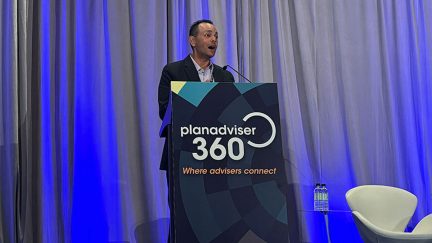Want the latest retirement plan adviser news and insights? Sign up for PLANADVISER newsletters.
A Mars-Venus Look at How Women and Men Invest
Most women—eight in 10—are concerned about saving enough for retirement, with the majority, 54%, saying they are “very concerned,” according to a new study on women’s retirement planning perspectives by the Insured Retirement Institute (IRI).
Compared with men, women are more concerned about financial issues and their ability to retire. More than half of women (54%) say they are very concerned about being able to retire when they want to, and 53% of women are very concerned about being able to afford the lifestyle they want throughout retirement. But only about one-third of men share these concerns to the same degree. For men, anxieties about the timing of retirement apply to 34%, and 36% express anxiety about the affordability of retirement.
When it comes to evaluating a financial adviser, women place much greater emphasis on a financial professional’s ability to explain financial concepts clearly without talking down to them, with 58% of women and 35% of men marking this as extremely important. Women rate more an adviser’s ability to listen well, use new technologies and consistently follow up. Women also emphasize that they want advisers to talk to them and not just their spouses, underscoring the importance of reaching out to both spouses equally.
Women have higher levels of concern regarding financial issues. The top worries? Debt, paying bills and investments declining in value. Spouses do not always see eye to eye on who takes the lead in working with their financial adviser, with 39% of men saying they take the lead, compared with only 26% of women. Men and women do not even agree on agreeing: 39% of women say they and their spouse work equally with their adviser, compared with just 26% of men.
NEXT: More “do it for me” or “with me” than DIY.Only one in five women described themselves as a “do it yourself” investor, compared with 40% of men. Women are likelier to describe themselves as “do it with me” or “do it for me” investors.
Women have more social financial habits than men, and are more likely to consult people in their social network for financial advice: 57% of women will consult friends and family, and 40% will consult work colleagues, compared with 43% and 31% of men, respectively.
Women are disciplined savers and most (78%) are contributing to a retirement savings plan. Identifying areas to cut back is a fairly big obstacle to saving for both women (36%) as well as men (31%). The real discipline to actually save is less of an issue for women than it is for men, with 18% of women citing this as an obstacle compared to 26% of men.
Women’s anxiety is understandable when considered within the context of a challenging landscape, says Cathy Weatherford, president and chief executive of IRI. “Income disparities and time out of the workforce are among factors that will reduce retirement savings as well as Social Security and employer-provided retirement benefits,” Weatherford points out. Women must also confront longer lifespans and the need to save more to cover those additional years of retirement income, she says, and women will need to convert their concern into positive action. “This is an area where the retirement planning community can make a significant impact, but it will require a more thorough understanding of women’s priorities, values, and preferences.”
The IRI study is based on a survey of 1,002 Americans, including 701 women and 301 men, who earn at least $30,000 annually. Respondents were between the ages of 25 and 65. The survey was conducted by Greenwald & Associates in July.
You Might Also Like:

Vanguard to Lower Asset Minimum for Digital Adviser Access

Capital Group Names Top Focus Areas for DC Investment Consultants



